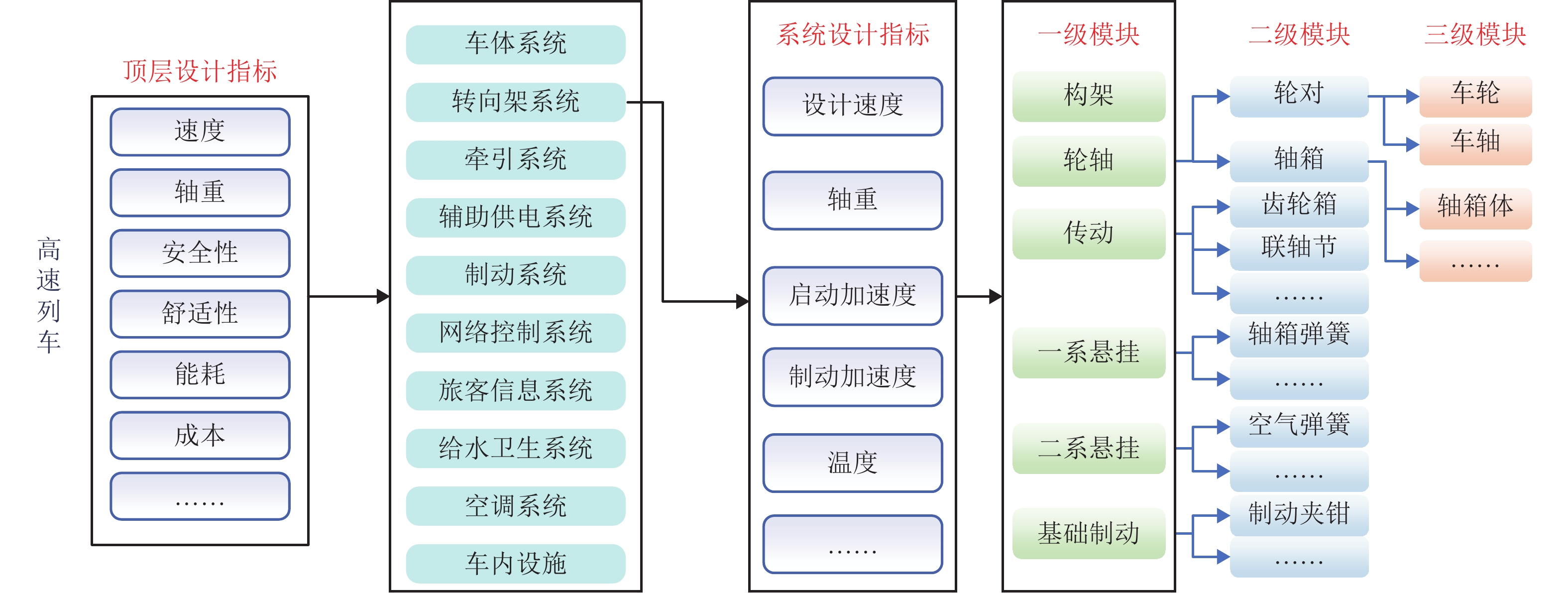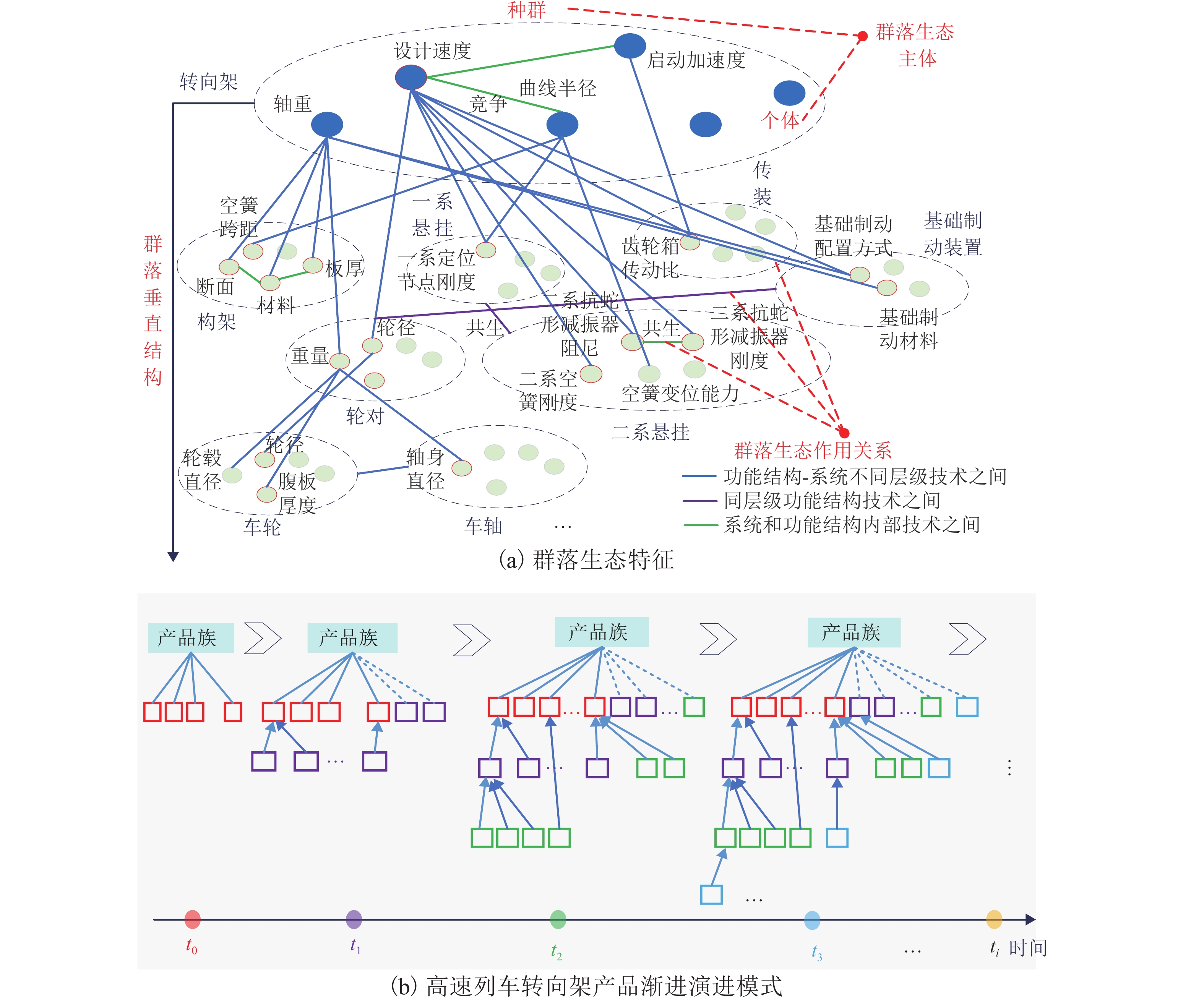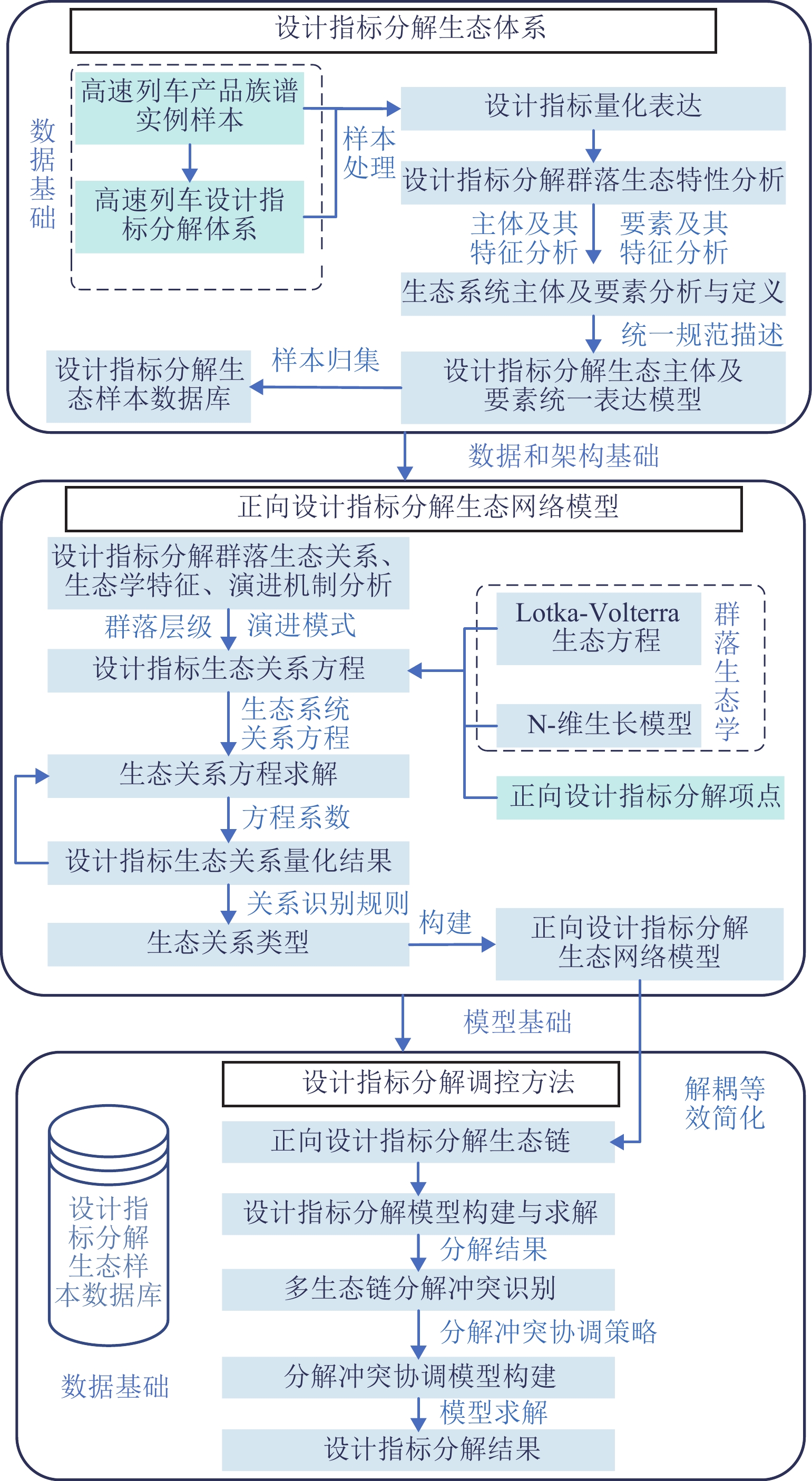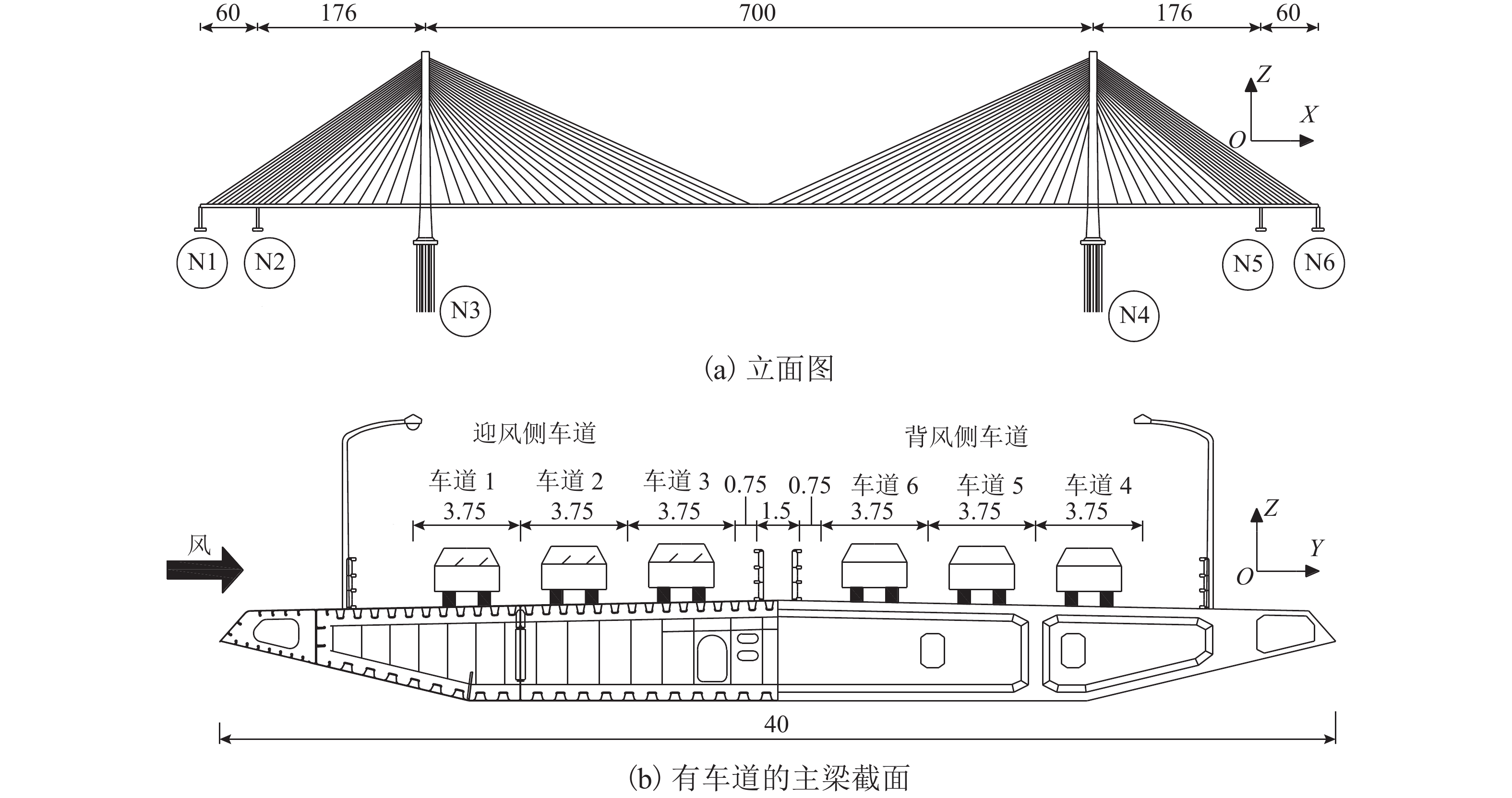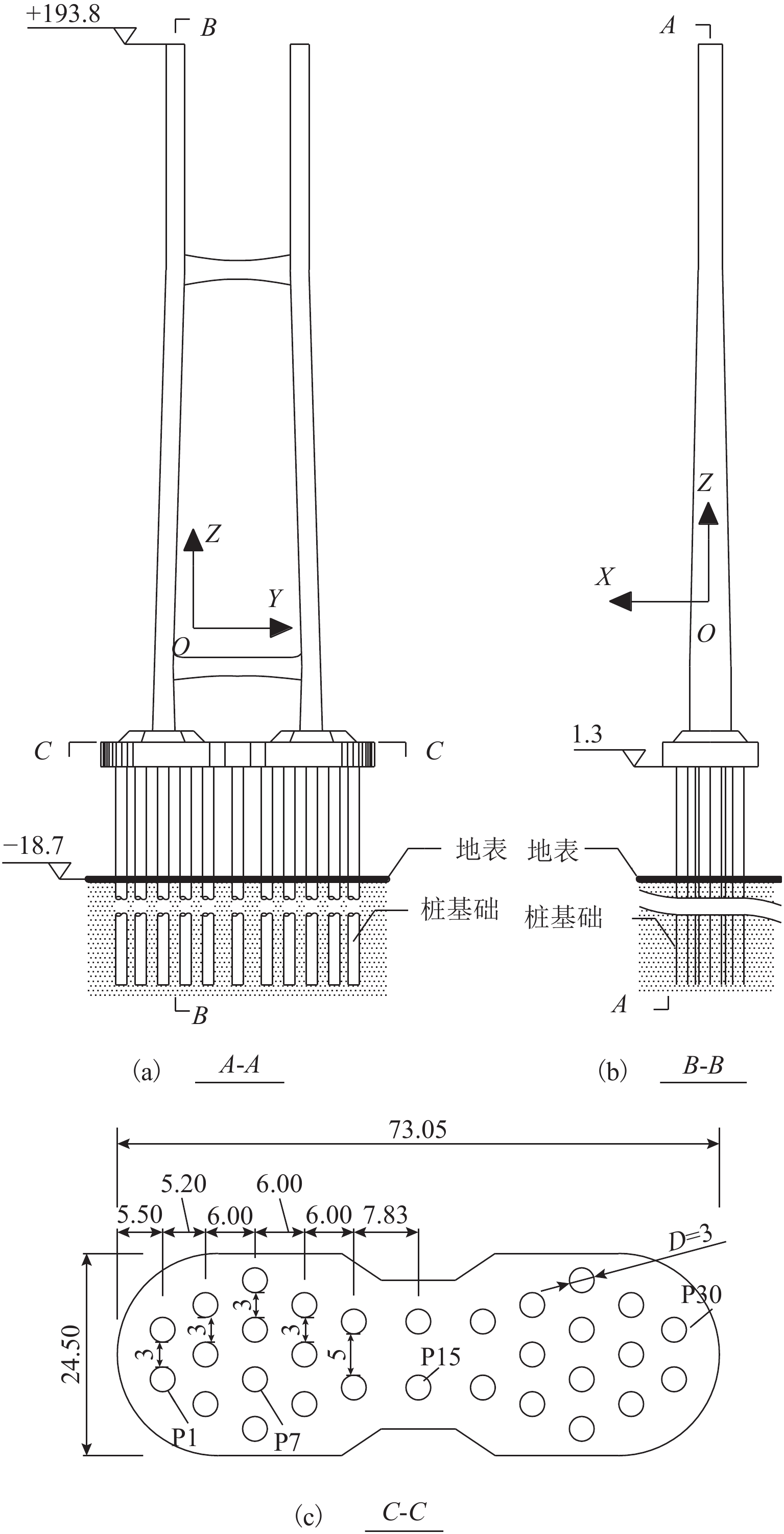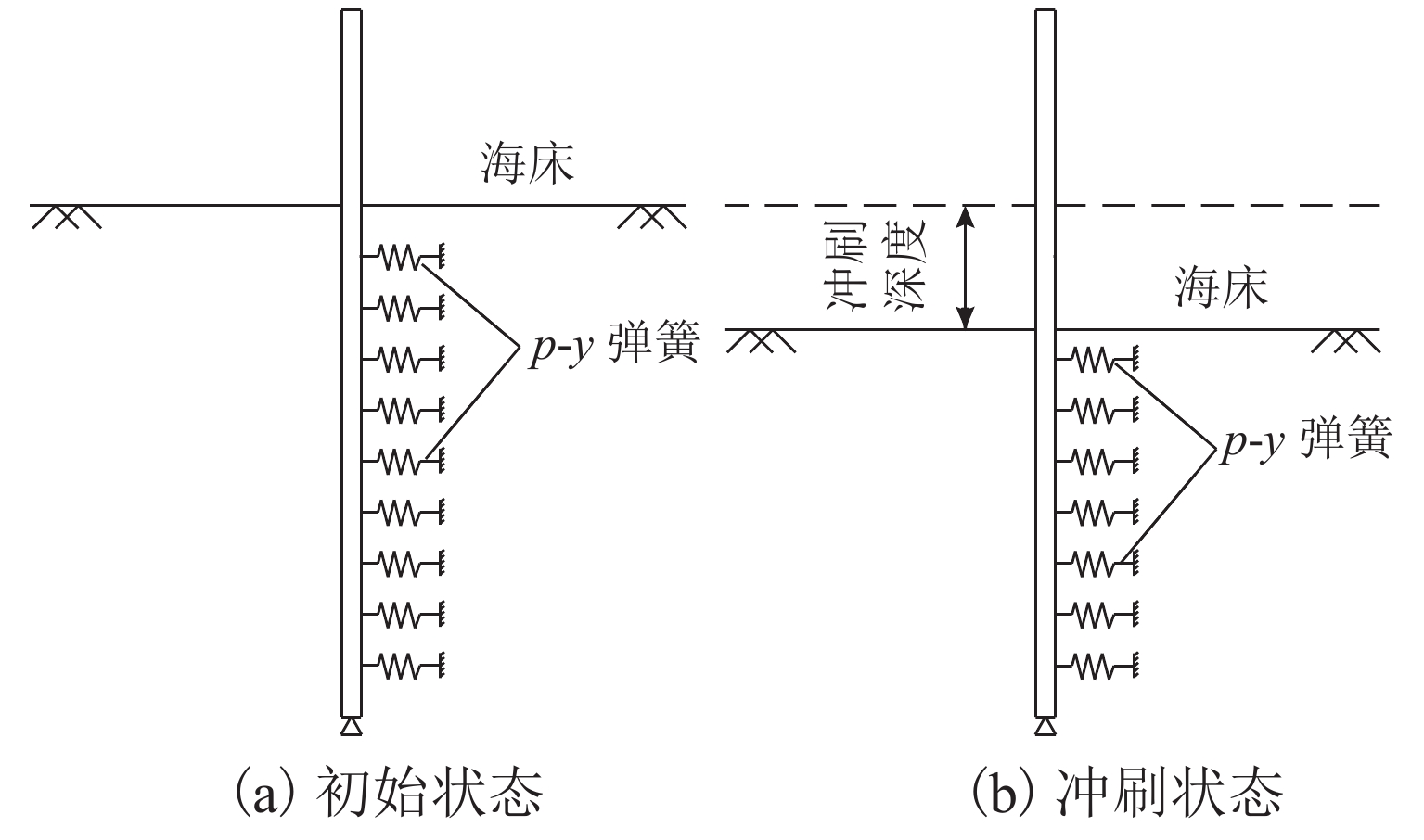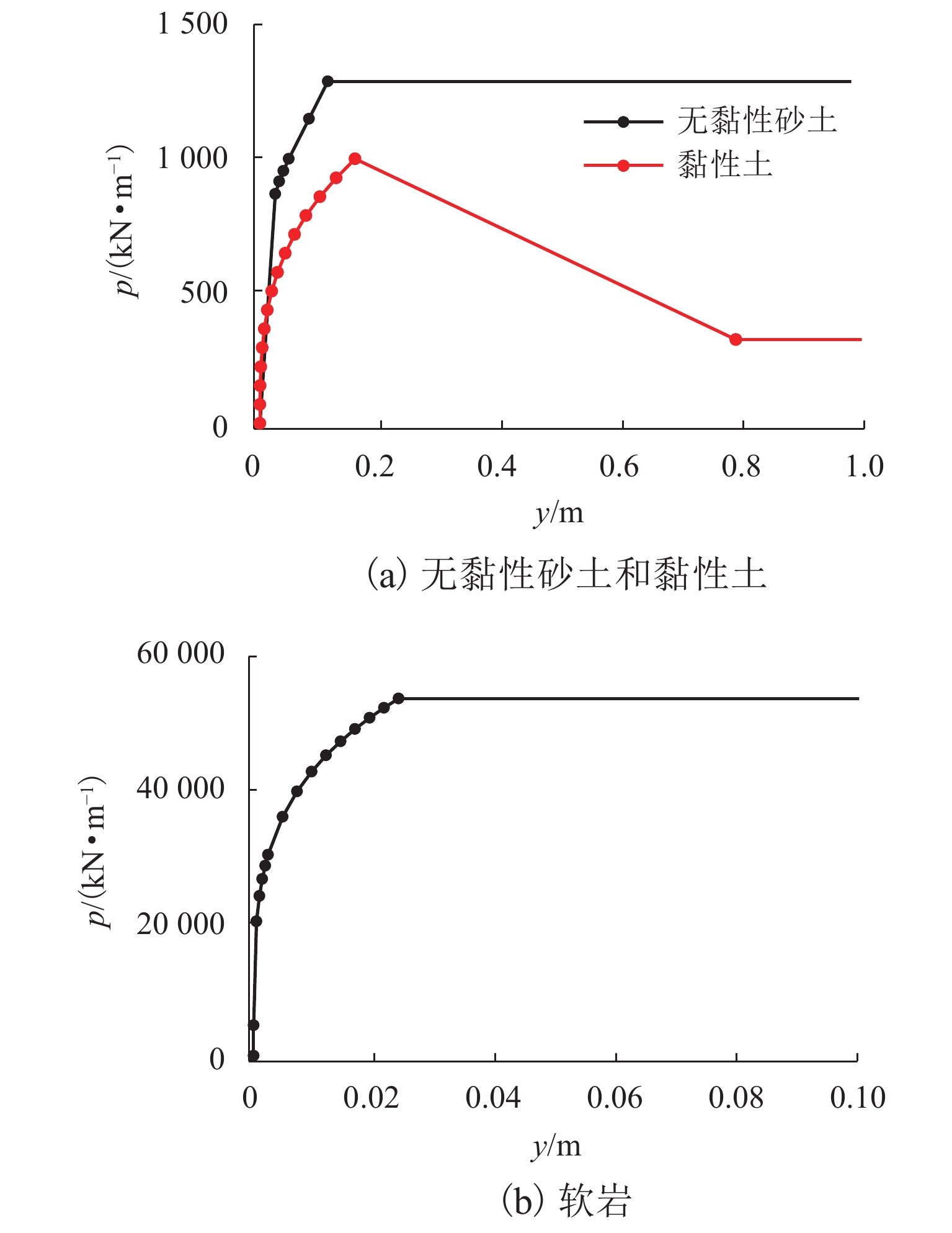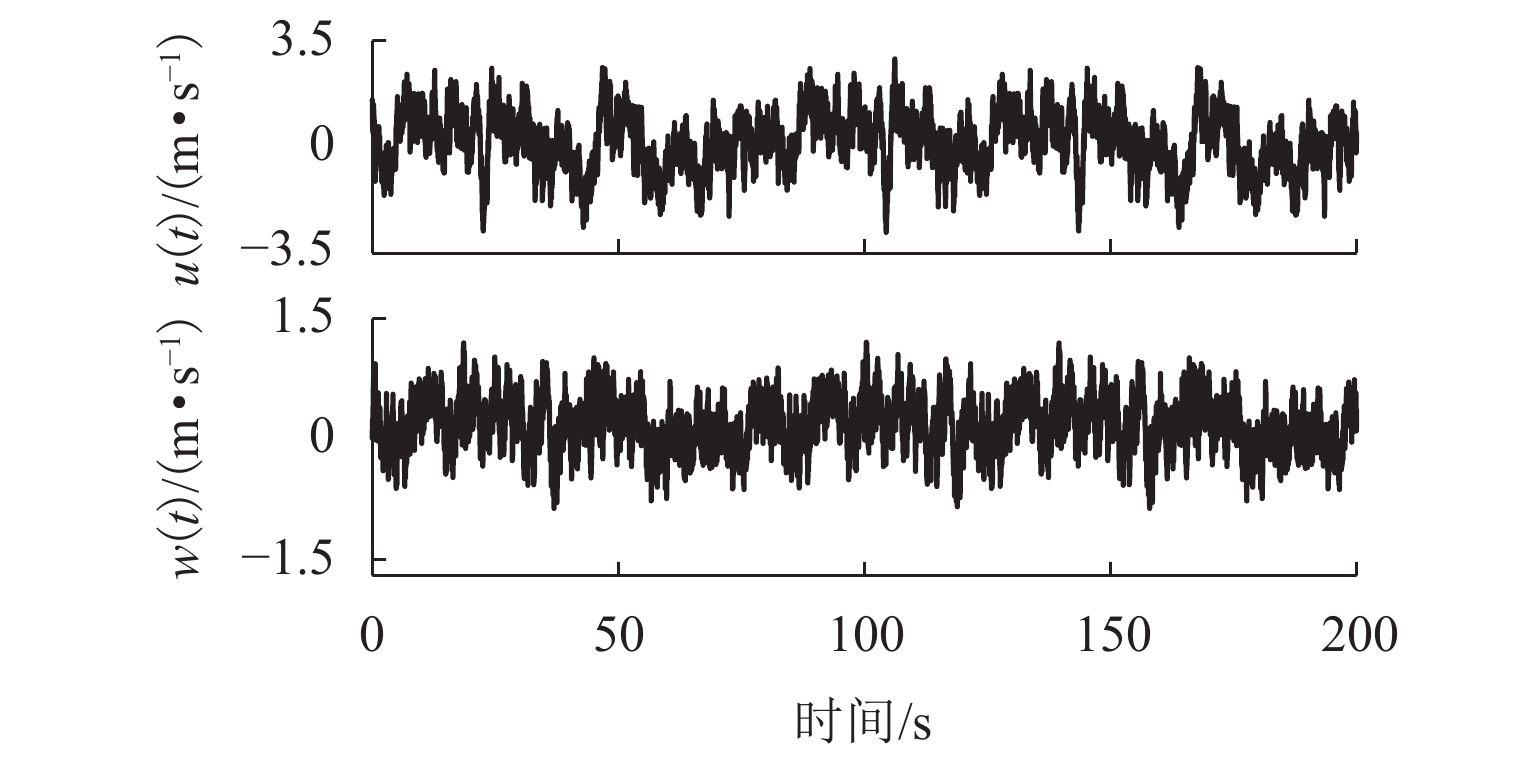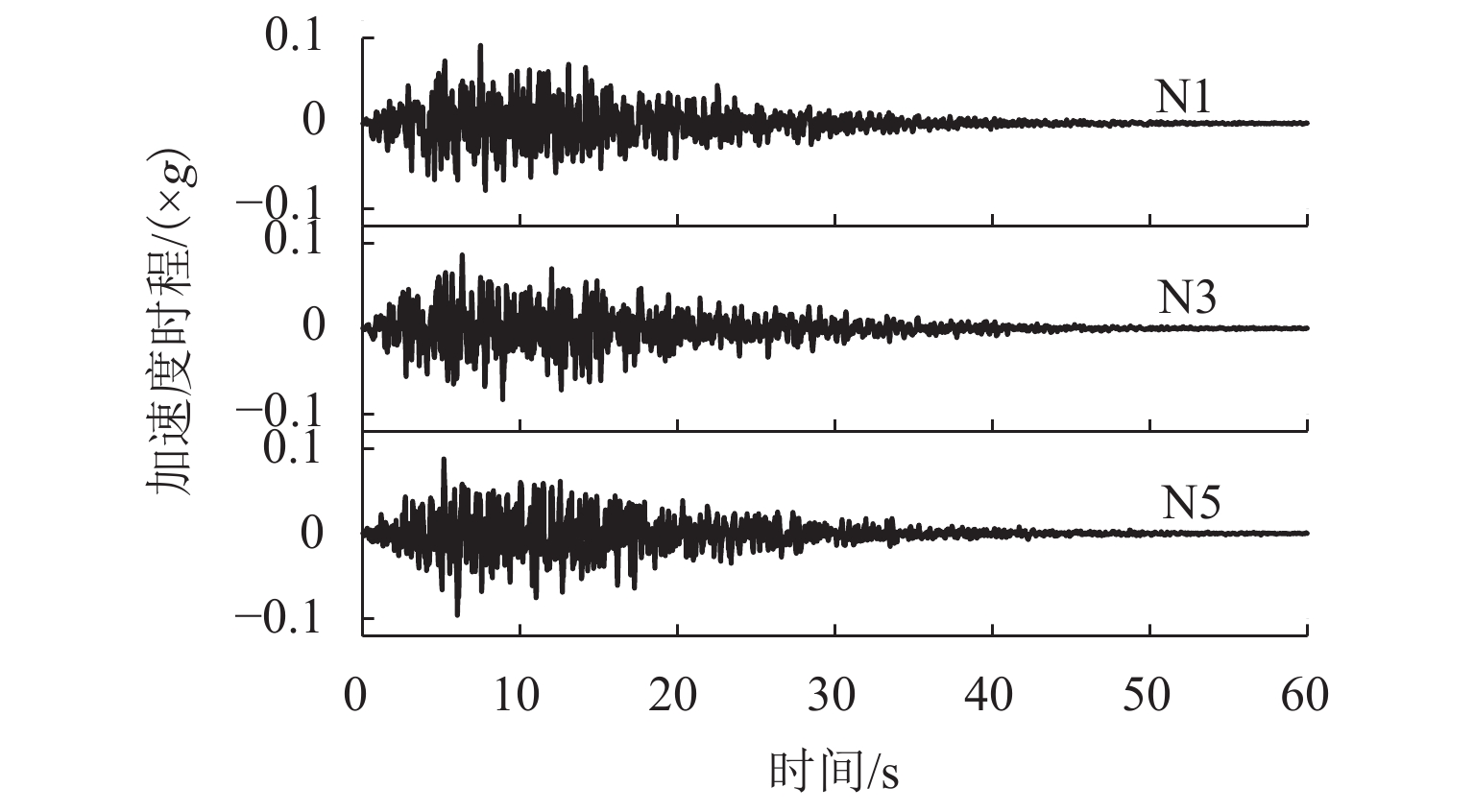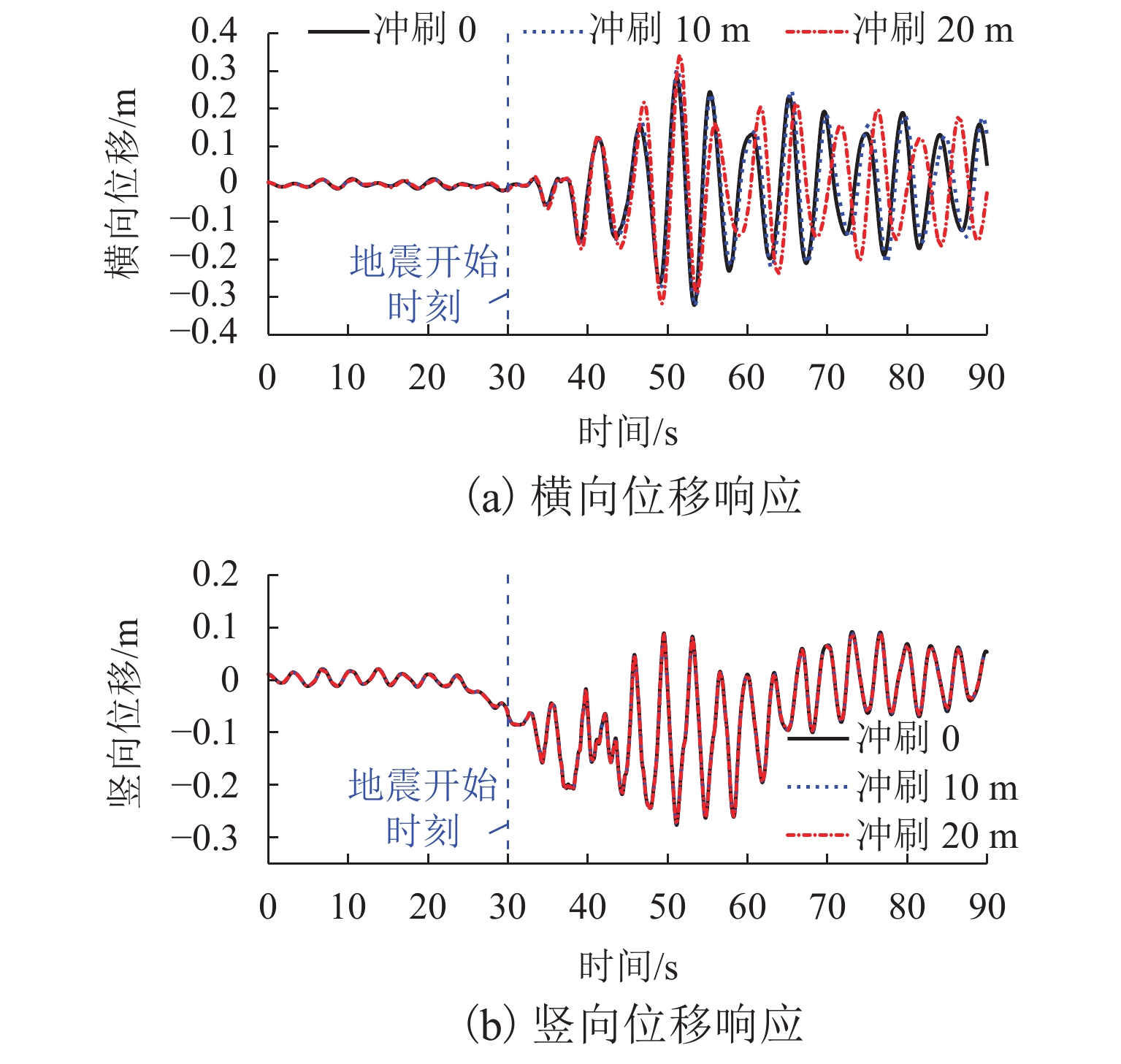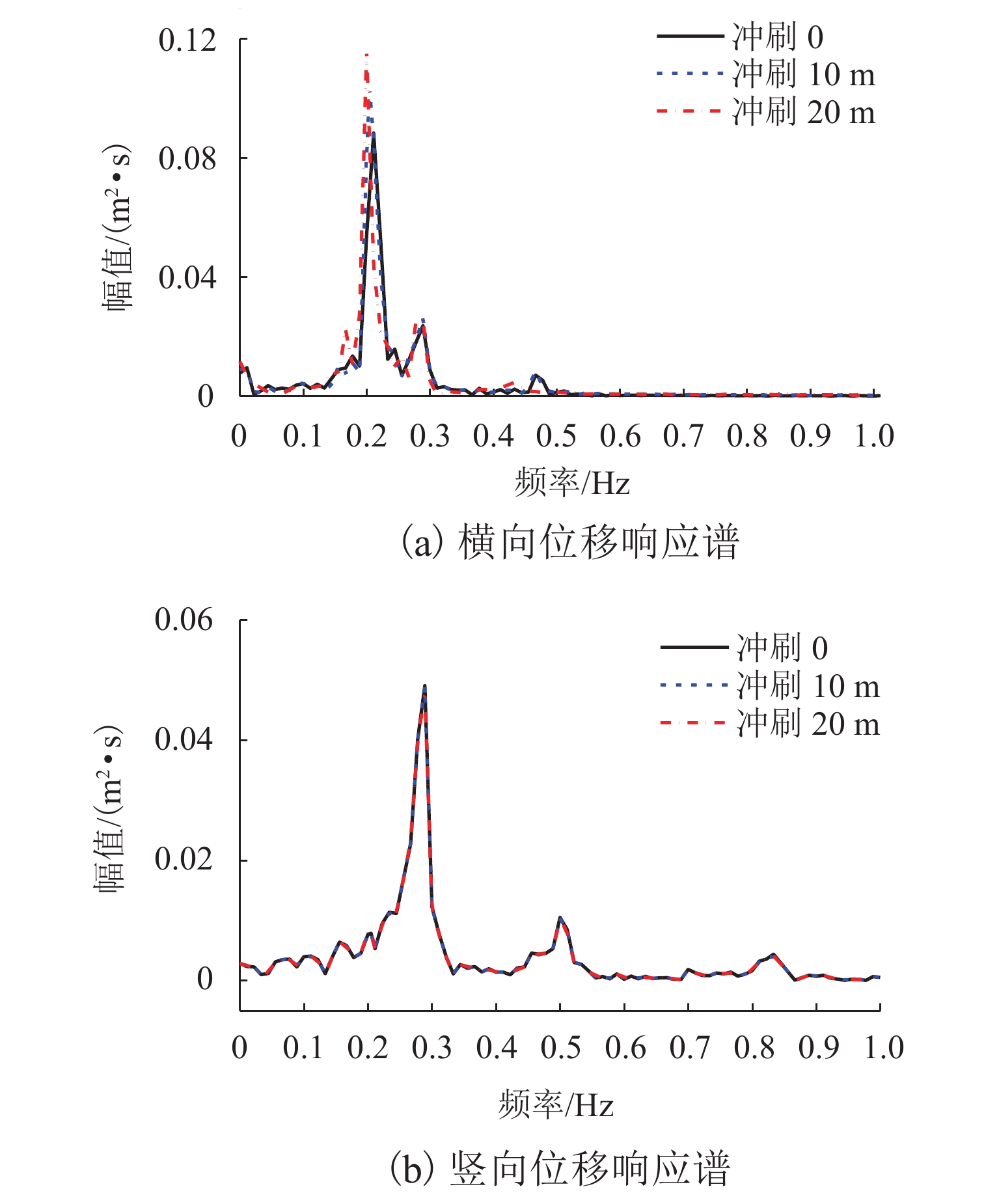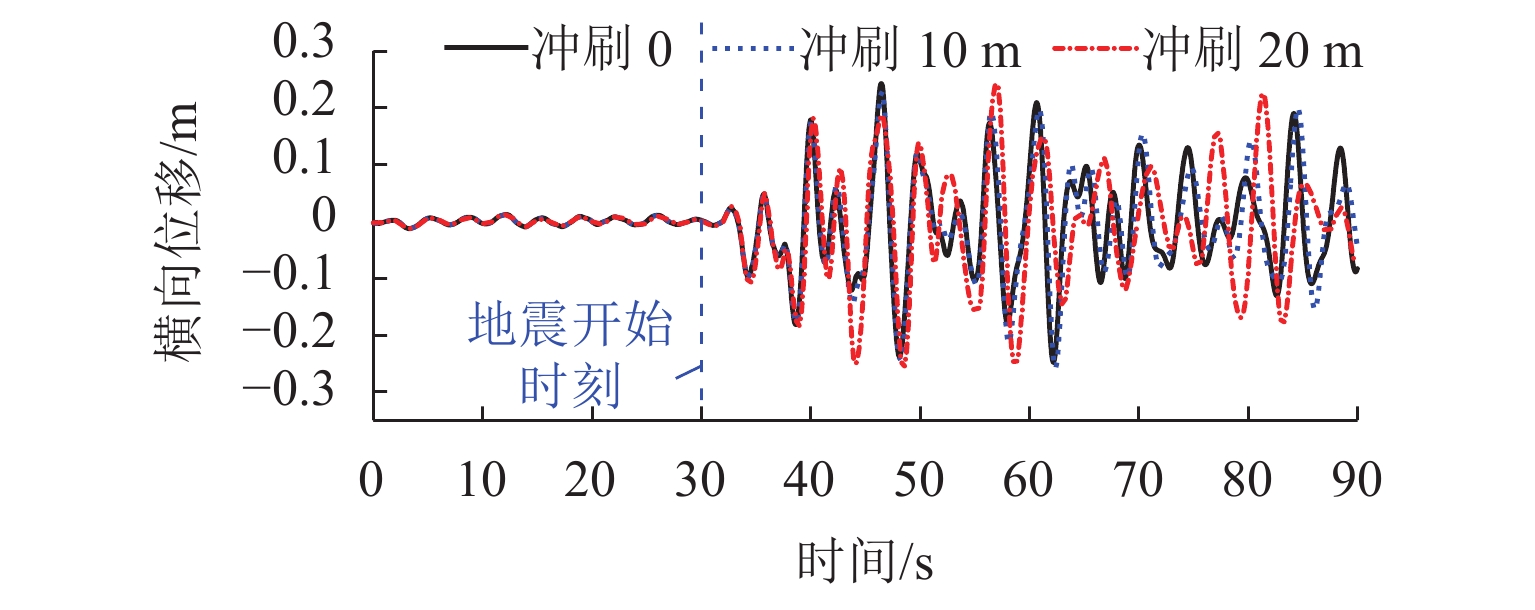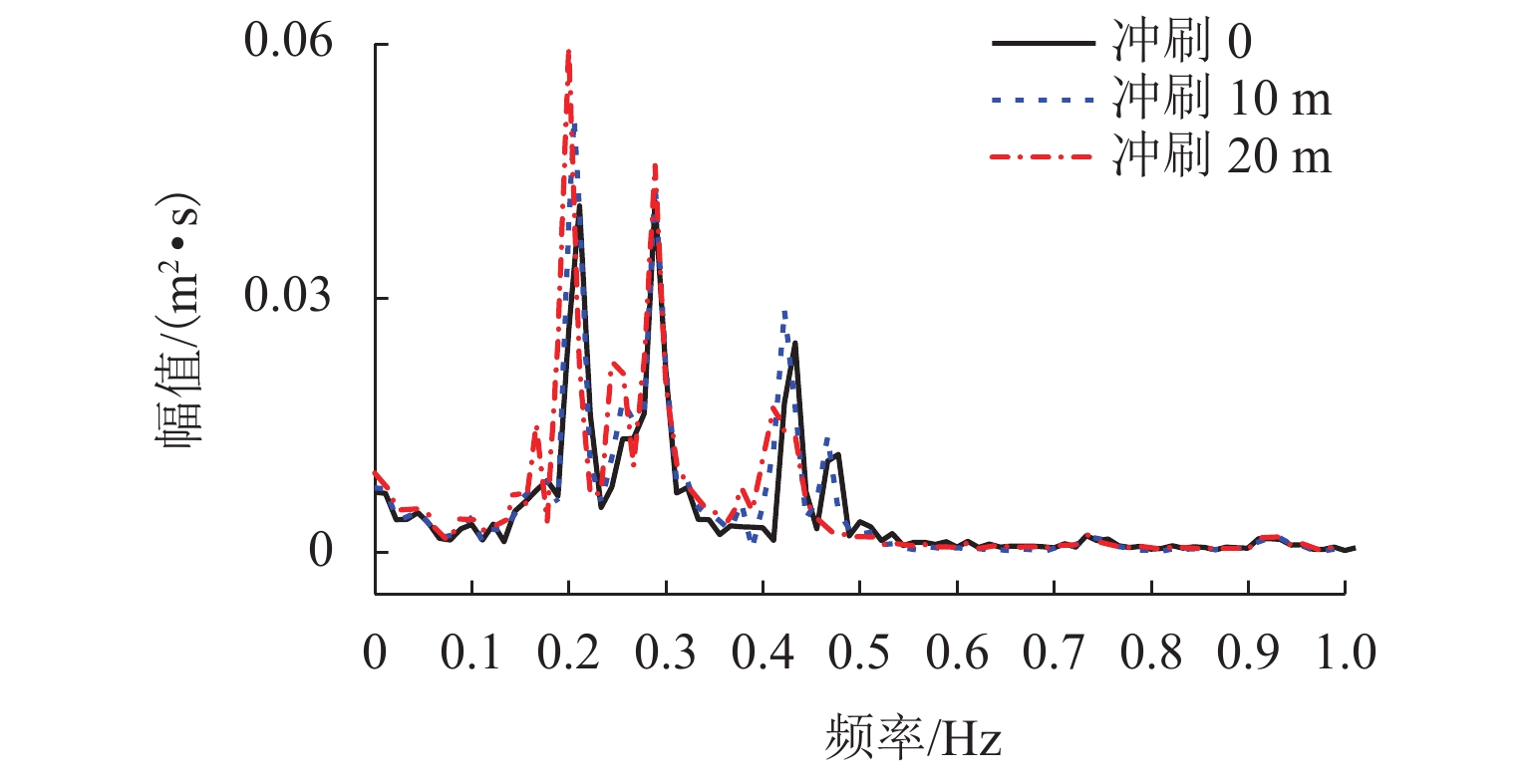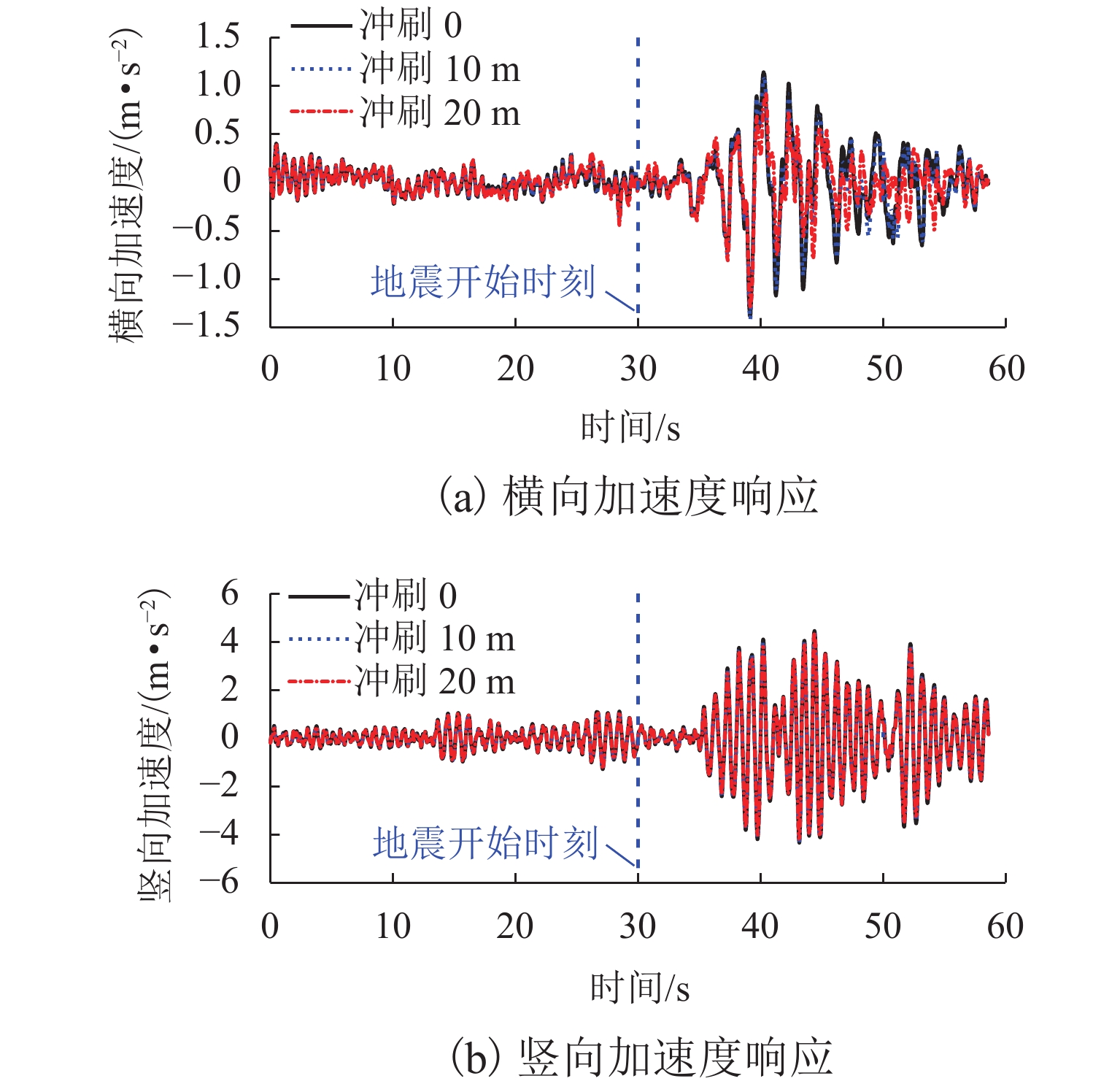Research Status and Prospect of Decomposition of Top-Level Design Indicators for High-Speed Trains
-
摘要:
顶层设计指标分解是决定高速列车正向设计周期长短和成功与否的首要环节. 首先,在阐述运输能力、安全舒适、绿色环保、经济性等高速列车顶层设计指标的基础上,从系统结构组成、运行边界条件以及大系统耦合作用等角度提出高速列车顶层设计指标分解所面临的技术挑战;然后,论述设计指标分解方法、设计指标分解关联模型和设计指标分解协调策略3个方面研究现状,并分析现有方法的不足与新需求;最后,展望群落生态学在高速列车顶层设计指标分解中的适用性,剖析基于群落生态学的高速列车顶层设计指标分解将会面临的关键问题,并给出相应的解决技术路线,以期为高速列车顶层设计指标分解的深入研究和实践提供参考.
Abstract:The decomposition of top-level design indicators is the primary link to determine the cycle length and success of forward design for high-speed trains. First, on the basis of expounding on the top-level design indicators of high-speed trains in terms of transportation capacity, safety and comfort, environmental protection, and economy, the decomposition challenges of top-level design indicators for high-speed trains were proposed from the perspectives of system structure, operating boundary conditions, and large-scale system coupling. Then, the research status was discussed, including the decomposition method, decomposition association model, and decomposition coordination strategy of design indicators, and the deficiencies and new needs of the existing methods were analyzed. Finally, the applicability of community ecology in the decomposition of top-level design indicators for high-speed trains was prospected. In addition, the key problems that will be faced by the decomposition of top-level design indicators for high-speed trains based on community ecology were analyzed, and corresponding technical routes for solutions were given, so as to provide a reference for the in-depth research and practice of the decomposition of top-level design indicators for high-speed trains.
-
Key words:
- high-speed train /
- design indicators /
- forward design /
- decomposition /
- community ecology
-
基础冲刷是引起桥梁结构坍塌破坏的重要因素之一. 根据Wardhana等[1]的调查, 1989年—2000年统计的美国503座损毁桥梁中,有一半左右的桥梁毁坏是由基础冲刷引起的. 自1986年以来,哥伦比亚的桥梁损毁有35%与基础冲刷有关[2]. 同样地,易仁彦等[3]对国内2000年—2014年桥梁的损毁事故进行调查发现,有超过30%的桥梁毁坏与基础冲刷有关. 大跨桥梁具有较小的刚度和较低的阻尼,因此,对风以及车辆等运营阶段荷载和地震极端作用非常敏感. 基础冲刷会减弱桥梁下部结构的横向约束,改变桥梁结构的性能,从而影响桥梁结构在不同荷载组合作用下的动力响应. 因此,研究冲刷效应对大跨桥梁车-桥系统动力响应的影响和评估桥梁结构和桥上行驶车辆的安全性具有重要意义.
近年来,已有许多学者针对基础冲刷对结构动力性能的影响展开研究:商宇等[4]研究基础冲刷对桩基动力性能的影响发现,基础冲刷使得桩基的自由长度增加,从而减小了桩基的刚度,增加了桩基的自振周期;通过施加瞬时激励的方式,梁发云等[5]研究了桥墩冲刷程度对简支梁桥频谱幅值的影响;基于结构的振型和自振频率,熊文等[6]分析了基础冲刷对结构刚度的影响,并提出了一种基于结构柔度矩阵的识别基础冲刷的参数;Chen等[7]通过对大跨斜拉桥在日常环境作用下的振动进行测量,分析了基础冲刷深度对主梁和桥墩模态频率的影响;通过进行室内实验和建立数值模型,Bao等[8]针对不同特性的地基土,研究了基础冲刷对桥墩固有频率的影响;Malekjafarian等[9]提出了一种模态振型比的冲刷指标,并研究了基础冲刷对模态振型比的影响,研究发现,模态振型比对基础冲刷的敏感性要高于普遍研究的固有频率;基于振型分解法,Khan等[10]通过数值和实验研究基础冲刷对结构模态振型的影响发现,随着基础冲刷程度的增加,健康模态振型与冲刷模态振型的均方根差几乎呈线性增加. 基础冲刷改变了结构的振动特性,从而影响结构在不同荷载作用下的动力性能. 利用有限元方法,李克冰等[11]分析了基础冲刷对车-桥系统动力性能的影响,并对比了基础冲刷前后列车运行的安全性,研究发现基础冲刷使得桥梁结构跨中的振动响应明显增大,同时降低了桥上行驶车辆的安全性;基于建立的车-桥-波浪耦合振动系统,Kong等[12]研究在波浪作用下不同冲刷深度对车-桥系统动力响应的影响发现,基础冲刷使得桥梁结构的自振周期增大,从而改变了车-桥系统的动力响应,基础的冲刷程度可以通过结构自振特性和车-桥系统动力响应的变化来进行识别;Wang等[13]研究了冲刷效应对多跨简支、多跨连续和连续刚构3种类型钢筋混凝土箱梁桥的动力特性和抗震性能的影响,研究结果表明,多跨简支类型的箱梁桥受基础冲刷的影响最大. 同时,在地震频发地区,可以通过增大桥梁结构的基础刚度来减少基础冲刷引起的结构损坏;杨婷婷等[14]通过小波包能量分析方法研究了车辆制动激励作用下基础冲刷和桥梁结构的动力响应关系,通过该方法可以确定基础冲刷的位置和程度;李岩等[15]研究匀速、制动和变速行驶车辆激励作用下基础冲刷对桥梁动力行为的影响规律发现,车辆制动激励下基础冲刷引起的结构动力响应的变化幅度最大;Wei等[16]开发了一种基于持续时间法的地震易损性分析框架,并利用开发的框架研究了基础冲刷对一座大跨斜拉桥地震易损性的影响.
基础冲刷会导致下部结构的承载力大大降低,使得桥梁结构在不同荷载组合作用下的动力响应加剧,从而威胁到桥梁和桥上行驶车辆的安全性. 大跨桥梁日常运营阶段常受到风荷载和车辆荷载的共同作用,当突发地震时,在桥上行驶的车辆还来不及撤离桥梁,此时车、桥、风、地震4个要素构成了复杂的地震-风-车-桥耦合动力系统. 由于大跨桥梁具有跨度大、阻尼低和刚度小的特性,在计算车-桥系统在地震作用下的动力响应时,忽略日常环境荷载的作用可能使计算结果偏于不安全. 目前,已有桥梁结构的冲刷研究多是针对运营阶段(冲刷、车辆、风荷载)或地震作用(冲刷、地震)下大跨桥梁的动力响应,而全面系统地开展考虑基础冲刷效应的桥梁结构-运营阶段荷载-极端地震耦合系统振动的研究还很少见. 本文旨在建立一个运营阶段的大跨桥梁在突发地震作用下的动力系统,该系统可全面地考虑地震发生前后(运营荷载、运营荷载和地震联合作用)基础冲刷对车桥耦合系统动力响应的影响,为更加精细地分析桥梁和桥上行驶车辆的安全性提供参考依据. 针对常见的车辆和风等日常运营荷载和破坏性较大的地震作用,将建立可以考虑基础冲刷效应的地震-风-车-桥耦合振动模型. 该耦合振动模型可以用于更加精细的动态行为,对全寿命设计和风险评估具有重要意义.
以江顺大桥为例,采用有限元分析软件ANSYS建立桥梁三维模型,基于MATLAB编程软件建立的地震-风-车-桥耦合振动系统,利用p-y曲线(p为土阻力,y为变形)折减法考虑不同冲刷深度的桩土荷载-位移关系,根据桩土荷载-位移关系和冲刷深度更新桩基的侧向支撑刚度和长度,由此建立了考虑基础冲刷深度的地震-风-车-桥耦合振动系统. 基于该系统,分析比较了桥梁结构的自振频率和车-桥系统动力响应的时频特性的变化,探究了冲刷效应对地震-风-车-桥动力系统的影响规律.
1. 工程概况和冲刷效应的模拟
1.1 工程概况
江顺大桥为60 m + 176 m + 700 m + 176 m + 60 m双塔双索面半漂浮体系斜拉桥,主梁宽40 m的扁平流线型箱梁,中间3跨为钢箱梁,最外侧两边跨为预应力混凝土箱梁,如图1所示. 江顺大桥两侧共有4个辅助墩,主塔(N3、N4)和辅助墩(N1、N2、N5、N6)如图1(a)所示. 2个H形桥塔由群桩基础支撑,每个群桩基础由30根直径为3 m的钻孔灌注桩构成,如图2所示. 桥梁结构的振型和自振频率如表1所示. 可以看出,桥梁结构的自振频率较低,自身振动对地震、风和车辆等动力作用比较敏感. 根据桥址处的河床演变规律、桥墩布置和水流特征值,计算得到设计期内桥址处的最大冲刷深度可达20 m. 桥址处地震基本烈度为Ⅵ度,常年风速在6级以上,江顺大桥在运营期间极有可能受到冲刷、地震、风和车辆的联合作用. 因此,本文以江顺大桥为研究对象,探究冲刷效应对地震-风-车-桥动力系统的影响规律.
1.2 冲刷效应的模拟
本文采用p-y曲线来考虑地基土的侧向力,并利用计算程序LPILE[17]来计算桩-土的p-y曲线,通过输入土层的物理参数和土层厚度可以计算得出土层任一深度位置处的桩-土p-y曲线. p-y曲线法将桩前土体简化为离散的非线性弹簧,通过弹簧的刚度-变形关系来描述桩土间的相互作用. 有限元模型中,将桩基础离散为单位长度的单元,在单元节点施加非线性弹簧,弹簧的刚度-位移关系即为利用计算程序LPILE计算得到的不同深度下桩土的p-y曲线,单元节点施加的弹簧力即为p-y曲线中节点位移和刚度曲线围成的面积.
由于p-y曲线能够合理地考虑土体的塑性和桩土间的非线性相互作用,因而在岩土工程领域和其他相关工程领域得到了广泛应用[18]. 针对群桩基础,可采用p因子修正系数来考虑群桩效应,即将单桩的p-y曲线乘以折减系数得到群桩的p-y曲线. 对于黏性黏土和无黏性砂土,Yang等[19-20]基于最优曲线法提出了p因子修正系数,如式(1)、(2).
R1=(S/D−17)0.043(10−HD),S⩽8D, H⩽10D, (1) R2=(S/D−17)0.056(10−HD),S⩽8D, H⩽10D, (2) 式中:R1、R2分别为黏性黏土和无黏性砂土的修正系数;S、D和H分别为桩间距、桩径和地表下地基土的深度,当桩间距和基础埋深满足S≤8D和H≤10D时,需要考虑群桩修正系数.
表 1 桥梁结构的前十阶自振频率和振型Table 1. First 10 natural vibration frequencies and modes of bridge振型数 自振频率/Hz 振型 1 0.0905 纵飘(主梁) 2 0.2029 1 阶对称侧弯(主梁、桥塔) 3 0.2572 1 阶反对称侧弯(主梁、桥塔) 4 0.2917 2 阶对称侧弯(主梁、桥塔) 5 0.2944 1 阶对称竖弯(主梁) 6 0.3331 1 阶反对称竖弯(主梁) 7 0.3450 2 阶对称竖弯(主梁) 8 0.3890 2 阶反对称竖弯(主梁) 9 0.4138 2 阶反对称侧弯(主梁、桥塔) 10 0.4274 1 阶对称扭转(主梁) 本文通过修改桩基础周围土体非线性弹簧单元的参数来模拟基础的冲刷效应. 随着冲刷深度的增加,桩基础的侧向约束长度会减小. 同时,土层厚度的减小会引起地基土的应力释放,从而使得剩余基土的刚度发生变化. 在模拟过程中,当基础冲刷发生时,去除冲刷土层的弹簧单元,并根据基础冲刷后的地面高程重新计算剩余地基土的p-y曲线. 根据冲刷后的p-y曲线和桩基侧向约束的长度来更新桩基侧向支撑的刚度和长度,从而在桥梁仿真模型中实现由于基础冲刷引起的地基土对结构侧向约束的变化. 基础冲刷的模拟示意如图3所示.
基础冲刷主要包括一般冲刷和局部冲刷. 局部冲刷的物理机理比较复杂,且目前没有能够准确预测局部冲刷深度的数学公式. 本文主要研究了冲刷效应对车-桥耦合动力系统的影响,因此,忽略了局部冲刷的影响,假设所有桩基具有相同的冲刷深度,局部冲刷对车-桥动力系统的影响不在本文的研究范围内.
2. 地震-风-车-桥耦合振动模型
采用有限元法建立桥梁模型,桥墩、桥塔、桩基和主梁利用空间梁单元模拟,斜拉索利用空间杆单元模拟,桩土间的相互作用利用非线性弹簧单元模拟. 本文将车辆模型模拟为质量-弹簧-阻尼系统,采用具有17个独立自由度的两轴四轮车辆模型[21]. 根据力的平衡关系,车-桥相互作用力Fvb和Fbv(b表示桥,v表示车,vb表示桥对车,bv表示车对桥,后文同)是一对大小相等且方向相反的力,基于车轮接触点处力的平衡条件,并考虑车辆的重力,车-桥相互作用力采用了Baker[22]提出的力学模型.
桥梁结构受到的风力由平均风引起的静风力以及脉动风引起的抖振风力和自激风力构成,每种风力又可进一步分解为升力、阻力和扭矩分量[23],如式(3).
Fbwind = [Lb(x,t)Db(x,t)Mb(x,t)]=[Lst+Lse(x,t)+Lbu(x,t)Dst+Dse(x,t)+Dbu(x,t)Mst+Mse(x,t)+Mbu(x,t)], (3) 式中:Fbwind为作用在桥梁结构上的风力;L、D和M分别为升力分量、阻力分量和扭矩分量,下标st、se和bu分别为静风力、自激力和抖振力,可利用准静态方法求解车辆受到的风力[22].
桥梁结构受到的地震作用力可利用大质量法进行施加,施加在结构上的等效地震力[24]为
Fbe=−Cas˙Ug−KasUg, (4) 式中:Kas(Cas)为刚度矩阵(阻尼矩阵),为在第s自由度发生单位位移或转角(单位速度或角速度)时,在第a自由度上产生的力或力矩;Ug和˙Ug分别为地震动的位移和速度时程.
通过建立桥梁和车辆模型,并考虑作用在车-桥系统上的作用力,得到地震-风-车-桥耦合振动系统的运动方程为
{M(i)v¨d(i)v+C(i)v˙d(i)v+Kvd(i)v=F(i)vb+F(i)vG+F(i)vwind,Mb¨db + Cb˙db + Kbdb = n∑i=1F(i)bv+FbG+Fbwind, (5) 式中:M、C和K分别为质量、阻尼和刚度矩阵;d、˙d和¨d分别为位移、速度和加速度矢量;F(i)vb(F(i)bv)为第i辆车与桥梁之间的相互作用力,i=1,2,⋯,n;F(i)vG和F(i)vwind分别为作用在第i辆车上的重力和风荷载;FbG为作用在桥上的重力.
采用数值积分方法分别求解式(5)中车辆和桥梁的运动方程,并通过不断迭代得到满足桥梁和车辆间耦合关系的动力响应.
3. 数值算例
3.1 工况设置
表2给出了桥址处地基土的物理参数,图4显示了不同土层的p-y曲线. 从图4(a)中可以看出:无黏性砂土的p-y曲线由3个阶段构成,前2个阶段的土体抗力和桩的侧向变形几乎成线性关系,第3阶段的土体抗力不再随着变形的增加而增加;黏性土p-y曲线的土体抗力在较小变形时迅速增大到峰值,然后,随着变形的增加土体抗力减小到一个相对的低值,随后保持不变. 软岩p-y曲线土体抗力随着桩的侧向变形的增加而迅速增大到峰值,随后基本保持不变,如图4(b)所示.
表 2 群桩基础处不同土层的物理和力学参数Table 2. Physical and mechanical properties of different soil layers at group-pile foundation土层 地基土
的类别土层
厚度/m重度/
(kN·m−3)排水剪切
强度/kPa内摩擦
角/(°)泊松比 弹性模量/
MPa单轴抗压
强度/MPa最大主应力为50% 的应变 应变
因子1 无黏性
砂土7.5 18 30 0.30 3 2 黏性土 10.0 20 93.8 0.35 21 0.007 3 软岩 29.5 22 0.25 7240 3.45 0.0005 桥面上车流布置为双向车流,本算例的车型采用轻型卡车[21],每车道布置15辆车,前后车距为50 m,车速设置为20 m/s. 桥塔和主梁分别均布了11个和83个风场点,桥址处日常风速取10 m/s,图5给出了主梁跨中的水平和竖向脉动风速(u(t)和w(t))时程. 在本研究中,考虑到车辆和桥梁的气动干扰,通过实验确定了车辆和桥梁的气动力系数[25-26],以便更好地预测其动态响应. 桥址处场地的特征周期为0.35 s,特征频率为17.952 rad/s,地震动水平方向的加速度峰值为0.1g,竖向分量取水平分量的2/3[27]. 假定地震的传播方向与桥梁主梁轴线夹角为45°,行波波速为1000 m/s,图6给出了辅助墩N1、N5和主塔N3支撑点处水平方向的地震动加速度时程.
3.2 冲刷深度对自振特性的影响
根据桥址处的水文条件,桥址处的最大冲刷深度为20 m. 由于局部冲刷的物理机理比较复杂且难以预测,同时,重点关注冲刷效应对车桥耦合动力系统的影响,因此,忽略了局部冲刷的影响. 本文假设所有桩基具有相同的冲刷深度. 为了研究冲刷深度对结构自振特性的影响,考虑了0 (无冲刷)、5、10、15、20 m 5个冲刷深度. 表3给出了不同冲刷深度下结构的自振频率. 由表可知,基础冲刷并没有改变结构的相关振型,但结构的自振频率随着基础冲刷深度的增加而不断减小. 对桥梁主梁纵向、侧向和竖向贡献最大的振型为振型1、振型2和振型5,相应振型的自振频率最大分别降低了1.22%、6.01%和1.53%. 因此,基础冲刷对结构的侧向振型影响最大,这主要是因为基础冲刷减弱了地基土对结构的侧向约束.
表 3 不同冲刷深度时桥梁的自振频率Table 3. Natural frequencies of the bridge under various scour depthsHz 振型序号 冲刷深度 0 5 m 10 m 15 m 20 m 1 0.0905 0.0903 0.0902 0.0901 0.0894 2 0.2029 0.1994 0.1987 0.1984 0.1907 3 0.2572 0.2531 0.2523 0.2520 0.2428 4 0.2917 0.2912 0.2911 0.2910 0.2835 5 0.2944 0.2933 0.2928 0.2926 0.2899 6 0.3331 0.3261 0.3240 0.3229 0.2988 7 0.3450 0.3366 0.3342 0.3331 0.3138 8 0.3890 0.3860 0.3852 0.3848 0.3796 9 0.4138 0.4070 0.4058 0.4053 0.3864 10 0.4274 0.4179 0.4152 0.4139 0.3907 3.3 考虑冲刷效应的桥梁响应
基础冲刷改变了结构的自振特性,从而影响了结构在不同荷载作用下的动力响应. 本节研究了考虑冲刷效应时车-桥系统在地震与风联合作用下的动力性能. 本节采用3.1节的工况设置,对比分析了冲刷深度分别为0、10、20 m时桥梁结构的动力性能. 为了便于观察桥梁结构在运营车辆和风荷载作用下的初始振动状态,假定地震在车流上桥第30 s时发生并持续了60 s.
图7为冲刷深度0、10、20 m时主梁跨中的横向和竖向位移时程. 如图7(a)所示:在运营车辆和风荷载作用 (0~30 s)下,结构的横向位移响应受基础冲刷的影响很小;在地震发生后(30~90 s),结构横向位移的变化明显增大,结构的横向地震位移响应对基础冲刷更加敏感,且随着冲刷深度的增加,结构的横向位移响应极值不断增大;与无冲刷下的动力响应相比,冲刷深度20 m时主梁的横向位移响应极值增大了9.1%. 与主梁跨中横向位移响应的规律不同,主梁的竖向位移响应受基础冲刷的影响很小,可以忽略,如图7(b)所示.
为进一步观察基础冲刷对结构动力特性的影响,利用快速傅里叶变换给出了桥梁主梁跨中在冲刷深度0、10、20 m下的横向和竖向位移响应谱,如图8所示. 对于结构的横向响应,与无冲刷情况相比,在基础冲刷深度为10 m和20 m时,一阶对称横向振型的频率从0.2029 Hz分别减小到0.1987 Hz和0.1907 Hz,分别降低了2.07%和6.01%. 0.1907 Hz(冲刷深度20 m)、0.1987 Hz (冲刷深度10 m)和0.2029 Hz (无冲刷)的显著峰值分别为0.116、0.103和0.088,如图8(a)所示. 此外,由图8(b)可以看出,基础冲刷深度0、10、20 m下的竖向位移响应谱几乎是相同的,这也说明了基础冲刷对桥梁竖向振动特性的影响很小,可以忽略.
冲刷深度0、10、20 m时桥梁左塔塔顶的横向位移时程及频谱如图9和图10所示. 与桥梁主梁动力响应的变化类似,基础冲刷使得结构的横向动力响应变大,且相应响应谱的幅值增大.
3.4 考虑冲刷效应的车辆响应
车辆的安全性主要取决于车辆的加速度响应. 本节采用与3.3节相同的荷载工况,同时选取车道1沿X轴正向行驶的第1辆车作为代表车辆来研究车辆的动力响应. 图11给出了地震前后车辆的横向和竖向加速度时程. 如图11(a)所示,在风荷载作用下(0~30 s),车辆加速度响应受基础冲刷的影响很小,可以忽略;在地震发生后(30~90 s),车辆的横向加速度响应有所降低,冲刷深度20 m时车辆的横向加速度响应极值比无冲刷时减小了7.7%. 然而,基础冲刷对地震发生前后车辆的竖向加速度响应影响都很小,如图11(b)所示.
4. 结 论
本文基于建立的考虑基础冲刷的地震-风-车-桥耦合振动系统,计算并分析了桥梁自振特性和车-桥系统时频特性,探究了基础冲刷对地震-风-车-桥耦合振动系统的影响规律,所得结论如下:
1) 结构的自振频率随着基础冲刷深度的增加而不断减小. 同时,基础冲刷对结构的侧向振型影响最大,这主要是因为基础冲刷减弱了地基土对结构的侧向约束.
2) 在运营车辆和风荷载作用下,结构的横向位移响应受基础冲刷的影响很小. 在地震发生后,结构横向位移的变化明显增大,结构的横向地震位移响应对基础冲刷更加敏感,且随着冲刷深度的增加结构的横向位移响应极值不断增大,结构的横向位移响应谱也相应增大.
3) 地震发生前后,结构的竖向振动受基础冲刷的影响均很小. 同时,不同冲刷深度下结构的竖向位移响应谱几乎是相同的.
4) 基础冲刷可能减小车辆横向加速度的响应,然而车辆竖向加速度响应随着冲刷深度的增加几乎没有发生变化.
-
表 1 设计指标分解研究现状
Table 1. Research status of decomposition of design indicators
类别 方法名称 方法总结 设计指标分解方法 质量功能展开(QFD)[5]、公理化设计(AD)[6]、设计指标分解协调法[7]、目标逐层分解法(ATC)[8]、非合作博弈理论[20] 基于经验的解析方法和以优化为主的设计指标分解方法 设计指标关联建模 DEPNET解决方案[23]、层级交互随机子模型[24]、设计结构矩阵(DSM)[25]、设计结构网络(DSN)[27]、多源数据融合方法[28] 设计指标之间、设计变量之间、设计指标和设计变量之间、系统与组件之间依赖关系建模 设计指标分解协调策略 约束网络[30]、多目标决策[31]、线性加权和评价函数、希求水平、功用图[32]、可拓方法与TRIZ理论[34]、群体决策和TRIZ理论[37]、博弈理论[38] 多性能指标、多设计属性冲突建模与协调 -
[1] 张卫华,缪炳荣. 下一代高速列车关键技术的发展趋势与展望[J]. 机车电传动,2018(1): 1-5,12.ZHANG Weihua, MIAO Bingrong. Development trend and prospect of key technologies for next generation high speed trains[J]. Electric Drive for Locomotives, 2018(1): 1-5,12. [2] OSTERAS T, MURTHY D N P, RAUSAND M. Product performance and specification in new product development[J]. Journal of Engineering Design, 2006, 17(2): 177-192. [3] PAHL G A W B. Engineering design: a systematic approach[M]. Revised Edition. London: [s.n.], 1988 [4] 缪炳荣,张卫华,池茂儒,等. 下一代高速列车关键技术特征分析及展望[J]. 铁道学报,2019,41(3): 58-70.MIAO Bingrong, ZHANG Weihua, CHI Maoru, et al. Analysis and prospects of key technical features of next generation high speed trains[J]. Journal of the China Railway Society, 2019, 41(3): 58-70. [5] PEDERSEN S N, CHRISTENSEN M E, HOWARD T J. Robust design requirements specification: a quantitative method for requirements development using quality loss functions[J]. Journal of Engineering Design, 2016, 27(8): 544-567. doi: 10.1080/09544828.2016.1183163 [6] GE P, LU S C Y, SUH N P. An axiomatic approach for “target cascading” of parametric design of engineering systems[J]. CIRP Annals, 2002, 51(1): 111-114. doi: 10.1016/S0007-8506(07)61478-4 [7] 张科施,李为吉,魏宏艳. 设计指标最优分配的协同方法[J]. 机械科学与技术,2006,25(7): 797-801.ZHANG Keshi, LI Weiji, WEI Hongyan. A new method for collaborative allocation of design requirement optimum allocation[J]. Mechanical Science and Technology, 2006, 25(7): 797-801. [8] KIM H M, MICHELENA N F, PAPALAMBROS P Y, et al. Target cascading in optimal system design[J]. Journal of Mechanical Design, 2003, 125(3): 474-480. doi: 10.1115/1.1582501 [9] ZHANG H Z, QIN S F, LI R, et al. Progressive modelling of feature-centred product family development[J]. International Journal of Production Research, 2020, 58(12): 3701-3723. doi: 10.1080/00207543.2019.1634295 [10] BJÖRN A, SANDÉN. A framework for analysis of multi-mode interaction among technologies with examples from the history of alternative transport fuels in Sweden[J]. Research Policy, 2011, 40(3): 403-414. doi: 10.1016/j.respol.2010.12.005 [11] ZHANG G L, MORRIS E, ALLAIRE D, et al. Research opportunities and challenges in engineering system evolution[J]. Journal of Mechanical Design, 2020, 142(8): 081401.1-081401.14. [12] 张卫华. 高速列车顶层设计指标研究[J]. 铁道学报,2012,34(9): 15-19.ZHANG Weihua. Study on top-level design specifications of high-speed trains[J]. Journal of the China Railway Society, 2012, 34(9): 15-19. [13] QI Y H, ZHOU L. The Fuxing: the China standard EMU[J]. Engineering, 2020, 6(3): 53-66. [14] ZHAO H W, LIANG J Y, LIU C Q. High-speed EMUs: characteristics of technological development and trends[J]. Engineering, 2020, 6(3): 67-88. [15] 郑浩,冯毅雄,高一聪,等. 基于性能演化的复杂产品概念设计求解过程研究[J]. 机械工程学报,2018,54(9): 214-223.ZHENG Hao, FENG Yixiong, GAO Yicong, et al. The solving process of conceptual design for complex product based on performance evolution[J]. Journal of Mechanical Engineering, 2018, 54(9): 214-223. [16] 张根保,金传喜,冉琰,等. 基于FMA分解的关键质量特性映射变换技术[J]. 重庆大学学报,2019,42(3): 1-14.ZHANG Genbao, JIN Chuanxi, RAN Yan, et al. Mapping technique of key quality characteristics based on FMA decomposition[J]. Journal of Chongqing University, 2019, 42(3): 1-14. [17] KIM H, CHEN W, WIECEK M. Lagrangian coordination for enhancing the convergence of analytical target cascading[C]//11th AIAA/ISSMO Multidisciplinary Analysis and Optimization Conference. Portsmouth: AIAA, 2006, 44(10): 2197-2207. [18] 詹军,吕起越,伍家麟,等. 基于模型的整车操纵稳定性指标逐层分解方法研究[J]. 科学技术与工程,2016,16(14): 288-291.ZHAN Jun, LYU Qiyue, WU Jialin, et al. Study on target cascading of vehicle handling and stability index based on vehicle dynamics model[J]. Science Technology and Engineering, 2016, 16(14): 288-291. [19] 侯宇明. 商用车板簧建模及整车性能指标分解与综合关键技术研究[D]. 武汉: 华中科技大学, 2011. [20] YAZDANI S, LIN Y T, CAI W B, et al. A game theory perspective on requirement-based engineering design[M]//Disciplinary Convergence in Systems Engineering Research. Cham: Springer International Publishing, 2017: 901-910. [21] 张捷,姚丹,王瑞乾,等. 高速列车低噪声设计中的部件声学指标分解方法[J]. 交通运输工程学报,2021,21(3): 248-257.ZHANG Jie, YAO Dan, WANG Ruiqian, et al. Decomposition method to determine acoustic indexes of components in low-noise design procedure of high-speed trains[J]. Journal of Traffic and Transportation Engineering, 2021, 21(3): 248-257. [22] ZHANG H Z, HAN X, LI R, et al. A new conceptual design method to support rapid and effective mapping from product design specification to concept design[J]. The International Journal of Advanced Manufacturing Technology, 2016, 87(5): 2375-2389. [23] OUERTANI M Z, GZARA L. Tracking product specification dependencies in collaborative design for conflict management[J]. Computer-Aided Design, 2008, 40(7): 828-837. doi: 10.1016/j.cad.2007.07.002 [24] 邱曦伟. 大规模复杂IT系统可靠性、性能、能耗关联建模理论及其优化技术研究[D]. 成都: 电子科技大学, 2016. [25] 唐敦兵,彭义兵,刘政伟. 基于关联矩阵与设计结构矩阵的计算模型求解顺序规划[J]. 机械工程学报,2008,44(12): 173-179. doi: 10.3901/JME.2008.12.173TANG Dunbing, PENG Yibing, LIU Zhengwei. Execution sequence planning of computational models based on incidence matrix and design structure matrix[J]. Chinese Journal of Mechanical Engineering, 2008, 44(12): 173-179. doi: 10.3901/JME.2008.12.173 [26] TANG D, ZHU R, TANG J, et al. Product design knowledge management based on design structure matrix[J]. Advanced Engineering Informatics, 2010, 24(2): 159-166. doi: 10.1016/j.aei.2009.08.005 [27] LOUREIRO G B, FERREIRA J C E, MESSERSCHMIDT P H Z. Design structure network (DSN): a method to make explicit the product design specification process for mass customization[J]. Research in Engineering Design, 2020, 31(2): 197-220. doi: 10.1007/s00163-020-00331-y [28] 刘振宇. 超大型空分装备工艺-结构-能耗关联设计方法研究报告[J]. 科技创新导报,2016,13(10): 161. doi: 10.3969/j.issn.1674-098X.2016.16.090LIU Zhenyu. Process-structure-energy correlation design method for super-large air separation equipment[J]. Science and Technology Innovation Herald, 2016, 13(10): 161. doi: 10.3969/j.issn.1674-098X.2016.16.090 [29] 彭翔. 复杂产品设计中参数关联和等效简化方法及其应用[D]. 杭州: 浙江大学, 2014. [30] 张少彤,熊光楞,李涛. 基于参数协调模型的多学科协同设计方法[J]. 计算机学报,2004,27(1): 115-120.ZHANG Shaotong, XIONG Guangleng, LI Tao. Multidisciplinary design method based on parameter coordination model[J]. Chinese Journal of Computers, 2004, 27(1): 115-120. [31] 孟秀丽,易红,倪中华,等. 基于多目标决策的协同设计冲突消解方法研究[J]. 计算机集成制造系统,2005,11(5): 668-672. doi: 10.13196/j.cims.2005.05.26.mengxl.005MENG Xiuli, YI Hong, NI Zhonghua, et al. Research on conflict resolution method based on multi-objective decision-making in collaborative design[J]. Computer Integrated Manufacturing Systems, 2005, 11(5): 668-672. doi: 10.13196/j.cims.2005.05.26.mengxl.005 [32] 城取岳夫,刘阳春. 转向架设计的思考方法及新的尝试[J]. 国外铁道车辆,2008,45(4): 12-15.CHENGQU Yuefu, LIU Yangchun. The thinking method for design of bogies and new attempts[J]. Foreign Rolling Stock, 2008, 45(4): 12-15. [33] HOUSSIN R, COULIBALY A. An approach to solve contradiction problems for the safety integration in innovative design process[J]. Computers in Industry, 2011, 62(4): 398-406. doi: 10.1016/j.compind.2010.12.009 [34] ZHOU J, GUI F, ZHAO Y, et al. Model and application of product conflict problem with integrated TRIZ and Extenics for low-carbon design[J]. Procedia Computer Science, 2017, 122: 384-391. [35] GUI F Z, ZHOU J Q, ZHAO Y W, et al. Conflict coordination and its implementation probability of product low-carbon design[M]//Lecture Notes in Computer Science. Cham: Springer International Publishing, 2018: 184-191. [36] 洪欢欢,胡舜迪,赵鹏,等. 产品创新中技术冲突的粒度分类与可拓协调方法[J]. 计算机集成制造系统,2018,24(1): 136-145.HONG Huanhuan, HU Shundi, ZHAO Peng, et al. Granularity classification and extension coordination method for technology conflict in product innovation process[J]. Computer Integrated Manufacturing Systems, 2018, 24(1): 136-145. [37] SONG W Y. Service conflict identification and resolution for design of product-service offerings[J]. Computers & Industrial Engineering, 2016, 98: 91-101. [38] 孙丽琴. 基于互联空气悬架系统的车辆动态性能矛盾冲突分析与博弈控制[D]. 镇江: 江苏大学, 2018. [39] 丁国富,姜杰,张海柱,等. 我国高速列车数字化研发的进展及挑战[J]. 西南交通大学学报,2016,51(2): 251-263. doi: 10.3969/j.issn.0258-2724.2016.02.005DING Guofu, JIANG Jie, ZHANG Haizhu, et al. Development and challenge of digital design of high-speed trains in China[J]. Journal of Southwest Jiaotong University, 2016, 51(2): 251-263. doi: 10.3969/j.issn.0258-2724.2016.02.005 [40] 丁叁叁,陈大伟,刘加利. 中国高速列车研发与展望[J]. 力学学报,2021,53(1): 35-50.DING Sansan, CHEN Dawei, LIU Jiali. Research, development and prospect of China high-speed train[J]. Chinese Journal of Theoretical and Applied Mechanics, 2021, 53(1): 35-50. [41] 张卫华. 高速列车耦合大系统动力学理论与实践[M]. 北京: 科学出版社, 2013. [42] ODUM E P, BARRETT G W. Fundamentals of ecology[M]. 5th ed. Belmont: Thomson Brooks/Cole, 2005 [43] 张青田. 群落生态分析方法与应用[M]. 北京: 化学工业出版社, 2021. [44] VELLEND M. Conceptual synthesis in community ecology[J]. The Quarterly Review of Biology, 2010, 85(2): 183-206. doi: 10.1086/652373 [45] 朱云龙, 陈翰宁, 申海. 生物群智计算与机器学习[M]. 北京: 清华大学出版社, 2020. [46] ZHANG G, MCADAMS D A, SHANKAR V, et al. Modeling the evolution of system technology performance when component and system technology performances interact: Commensalism and amensalism[J]. Technological Forecasting and Social Change, 2017, 125: 116-124. doi: 10.1016/j.techfore.2017.08.004 [47] ZHANG G L, ALLAIRE D, MCADAMS D, et al. System evolution prediction and manipulation using a Lotka-Volterra ecosystem model[J]. Design Studies, 2019, 60: 103-138. doi: 10.1016/j.destud.2018.11.001 [48] NAIM A M, LEWIS K. Modeling the dynamics of innovation in engineered systems[C]//ASME 2017 International Design Engineering Technical Conferences and Computers and Information in Engineering Conference. Cleveland: [s.n.], 2017: 1-13. -






 下载:
下载:










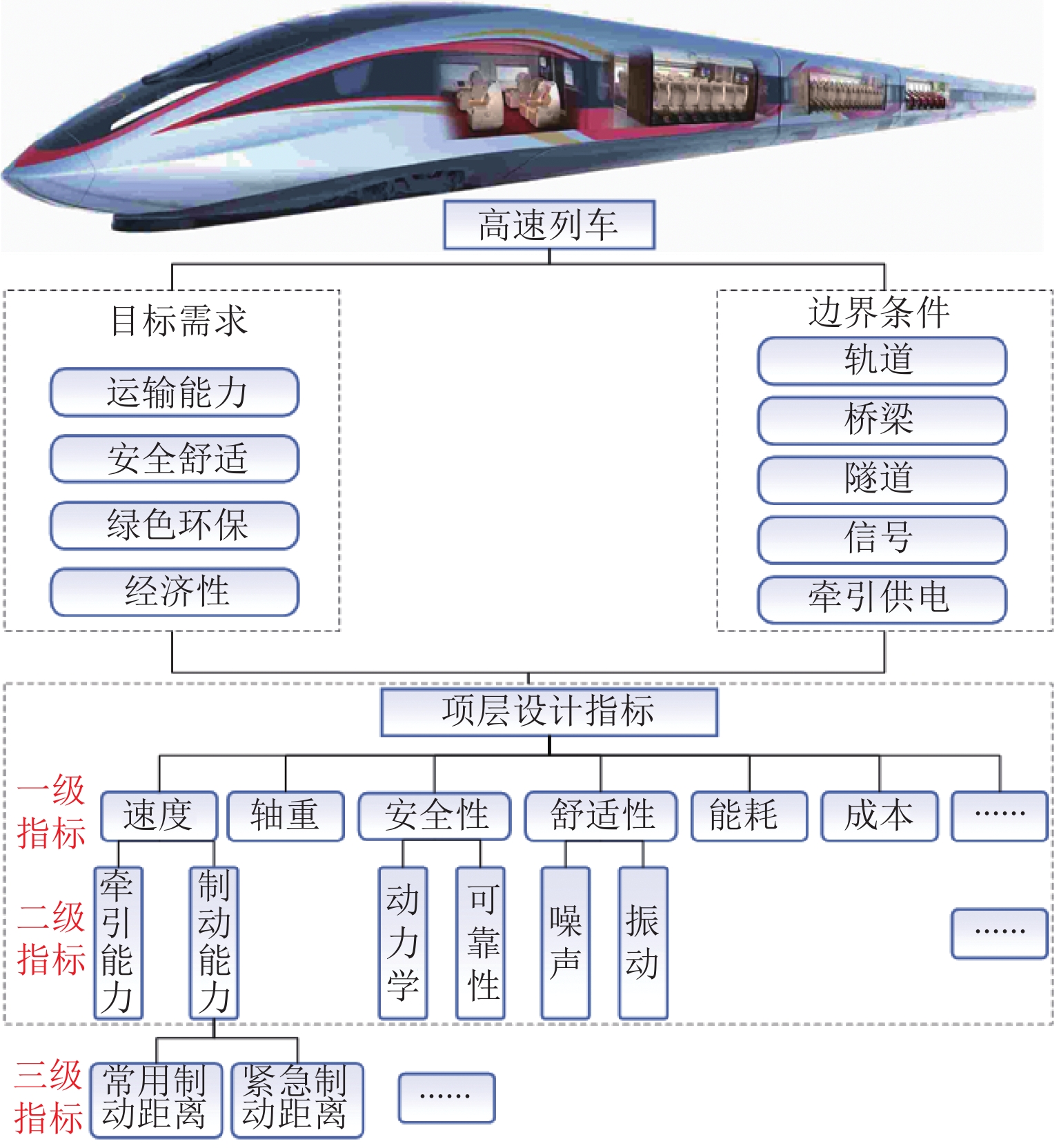
 下载:
下载:
